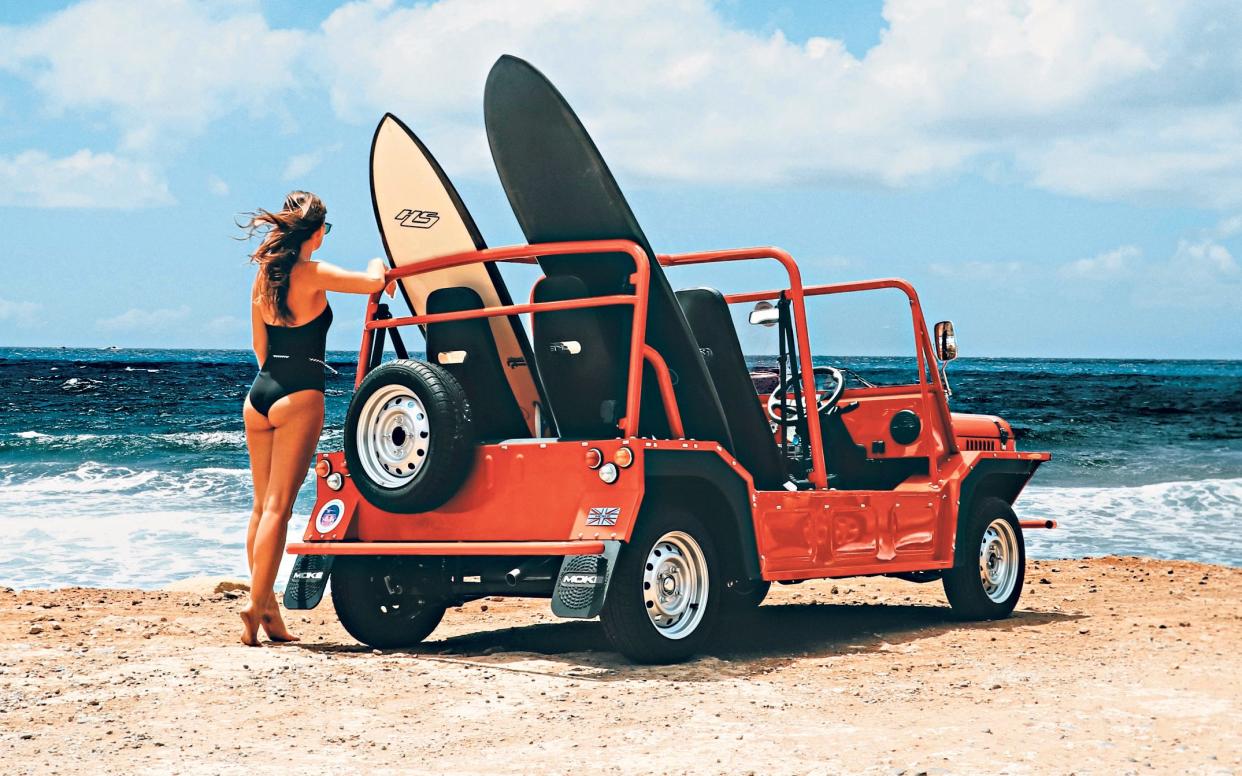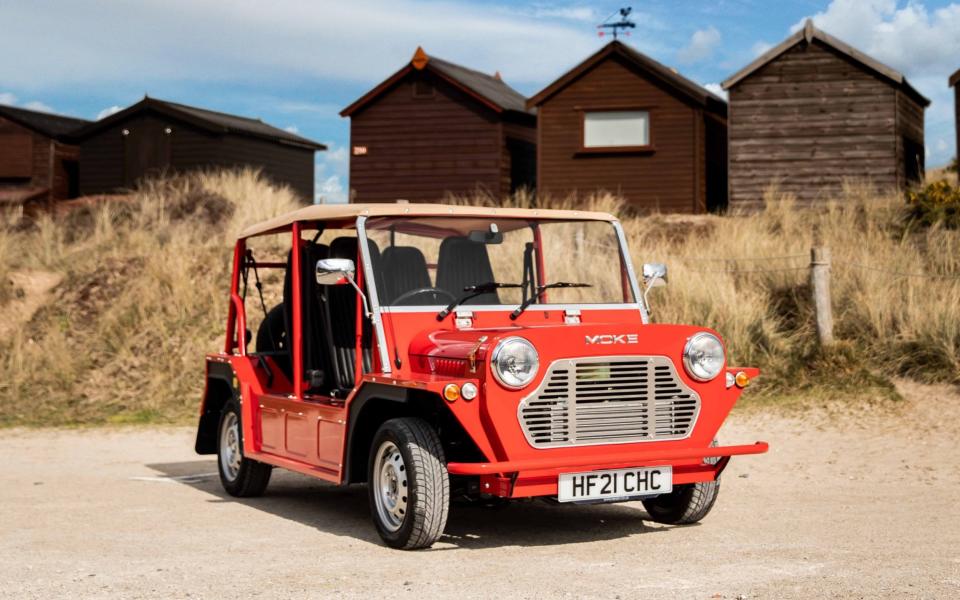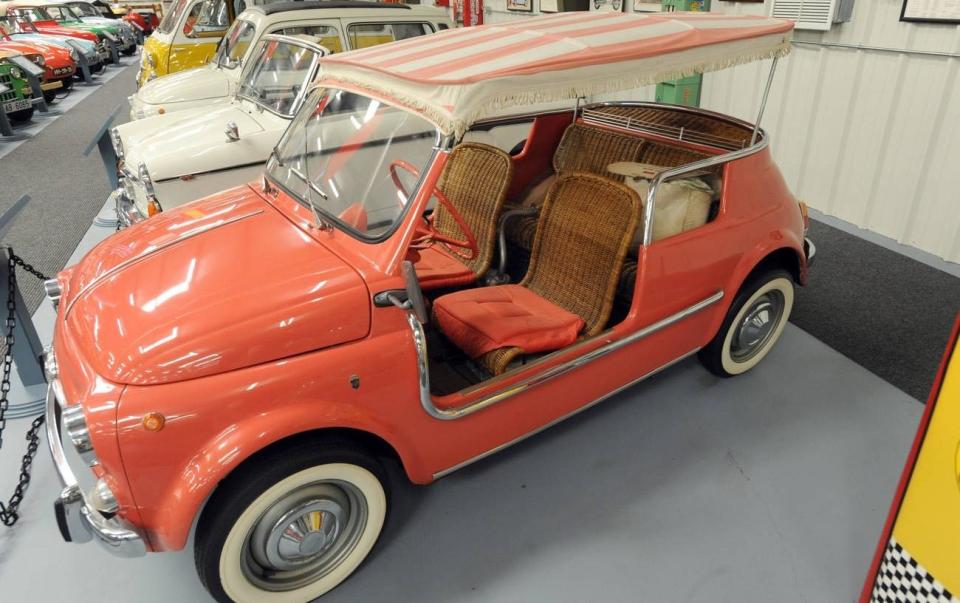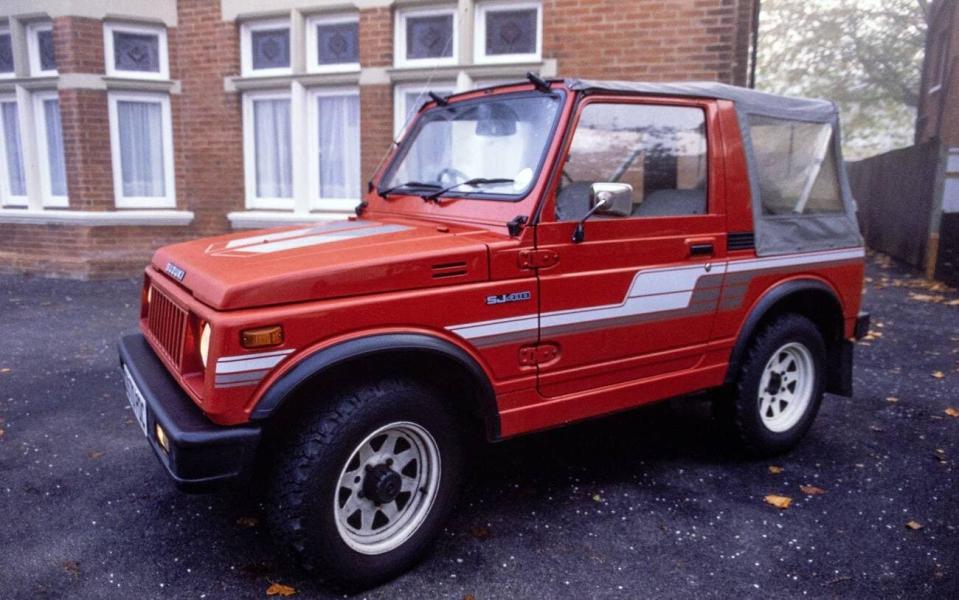Almost 60 years later, the mighty Mini Moke is back

‘A heroic failure” has become a quintessential British term often associated with the exploits of Captain Scott, David Livingstone, Eddie “The Eagle” Edwards or any footballer who has missed in a penalty shoot-out for England.
The Mini Moke is worthy of the same title. Created as a vehicle for the British military in the late 1950s, Project Buckboard failed to impress Army top brass not once but twice, before reinventing itself as a fashionable symbol of the Swinging Sixties.
Like miniskirts and the Summer of Love, this beach buggy with attitude was a cultural touchpoint for the era. It was adored by celebrities as varied as Paul McCartney, Brigitte Bardot, the Beach Boys and Princess Margaret.
And while the Citroen 2CV, Volkswagen Beetle and the original Mini were designed for practical, everyday use, the first civilian Moke of 1964 was built for breezing around holiday resorts and festivals − the groovy, alfresco alternative to a conventional car.
Almost 60 years later, the mighty Moke is back, based on a chassis similar to the original BMC military prototype but better equipped for modern driving. Not much better – but that’s not the point, says Isobel Dando of UK-based Moke International. “Moke is a British brand that has always evoked feelings of fun and freedom,” she says. “Countless celebrities have been captivated by the personality and unique styling. Now we are relaunching the brand into a new era, for a new generation.”
A slice of Riviera chic today costs about £24,000 but, as I discovered driving a Moke across rural Sussex, the British haven’t lost their enthusiasm for a car apparently ideally suited to a cartoon character such as Noddy or Postman Pat.
That probably wasn’t what the father of the original Mini, Sir Alec Issigonis, had in mind when he put pen to paper to create the Moke prototype. Presented to military top brass in 1959, his utility vehicle with no roof or doors failed to pass muster.

Poor ground clearance and a weak 848cc engine were to blame, so Issigonis had another go. The 1962 model had larger tyres, improved suspension and could be adapted for four-wheel drive. Rejected again, the Moke had all the makings of another great British failure.
Except it wasn’t. Buoyed by the success of the iconic Mini on which it was based, the Moke was then civilised for public use, Austin hoping to recoup some of the development costs of the military version. The utilitarian vehicle was launched in 1964 and was built at Longbridge, West Midlands.
Despite basic equipment and limited on-road ability, the Mini Moke gained cult status as a laid-back runabout for the rich and famous. A Moke appeared in the TV series The Prisoner and several James Bond films; more recently, David Letterman and Brooklyn Beckham were photographed grinning behind the wheel.
The current producer, Moke International, has owned the business trademark since 2015. While it looks the same as the original, this new-millennium example features a 66bhp, 1.1-litre petrol engine sourced from China, power steering, uprated suspension and the choice of a manual or automatic gearbox.
And while a Moke is the ideal companion on the streets of Monaco or beachside on the Côte d’Azur, the upright windscreen, fabric roof and matching doors will cope with the worst of British weather. Wisely, four waterproof seats are also fitted.
The sparse standard equipment includes leather bonnet straps and a retro-look radio – just about audible at up to 45mph – while the top speed is in excess of 65mph. On a wet day with the weather equipment in place, the steamy windscreen can be heated for improved visibility.
Choose from 13 vibrant summery colours, including eye-popping Flamingo Pink and Florida Orange.
All modern Mokes are engineered in Nuneaton before final assembly in France. The larger revised chassis has been redesigned to accommodate four passengers, and there’s talk of an all-electric, “woke Moke” too.
Heroic failure or British classic? Either way, the Moke is a long-term success story. Not bad for a little car named after a slang term for a donkey.
Fun in the sun: classics for the beach
Fiat 500 Jolly

Blessed with bodywork sculpted by Carrozzeria Ghia, the 1958 Jolly was a chopped down Fiat 600. Minus the doors, this fun runabout still cost double the price but wowed potential buyers with a fringed fabric roof and wicker seats, essential and practical on sandy beaches. Only 650 were made – glamorous owners included Mae West, Yul Brynner and Grace Kelly.
Messerschmitt KR200 Kabrio

If you drive a Triumph Spitfire, a matching Messerschmitt is a must. The KR200 Kabrio was born in the 1950s – a canvas roof offering better ventilation than the stifling, bubble hardtop version. Powered by a 191cc, single-cylinder engine, manoeuvres were made via a steering bar that was pushed rather than turned, just like an aircraft.
Suzuki SJ410

This convertible 4x4 was the must-have hire car for holidaymaking Brits abroad in the 1980s. Rugged and cheap, the lightweight S J was brilliant off-road but less impressive on tarmac. Bedevilled with rust problems, the S J still looked cool posing on a Costa del Sol beachfront. A forerunner of the current Jimny – a far more accomplished car.

